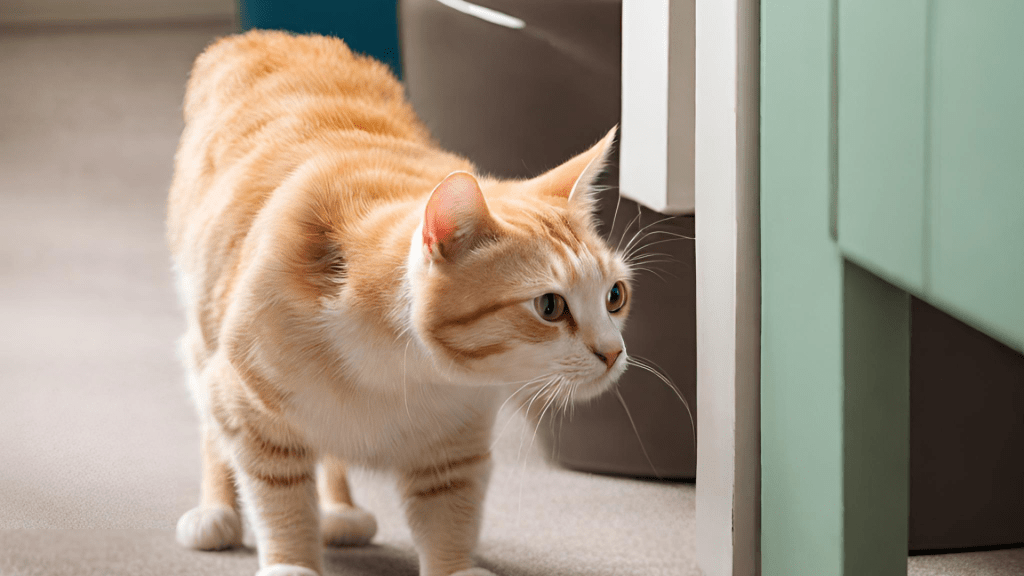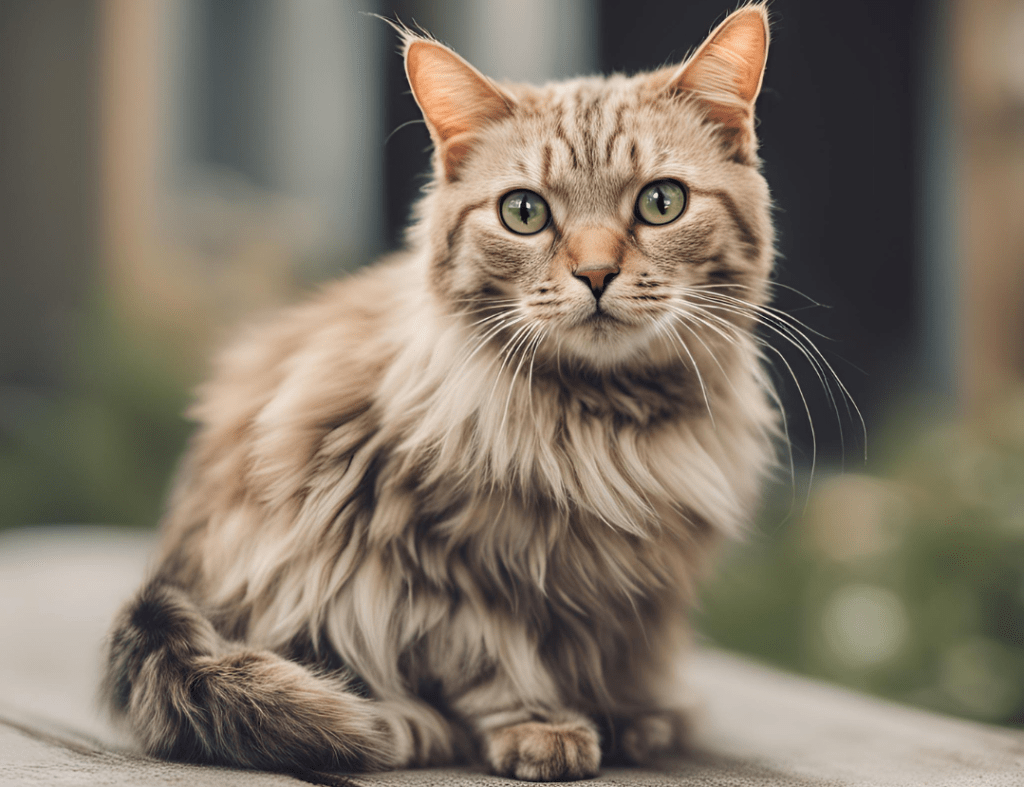
Training your cat to use the litter box is crucial. It is one of the first steps to ensuring a harmonious home environment. Whether you’re a first-time cat owner, understand the process of litter training. If you are adding a new feline friend to your household, understand the process of litter training. It can save you from a lot of headaches.
How to Litter Train a Cat – Step-by-Step Guide
Cats are naturally clean animals. In the wild, they instinctively bury their waste to hide their scent from predators. This behaviour translates well to domestic life. A litter box serves as a safe and familiar spot for your cat to do its business. Observing your cat’s natural tendencies can provide valuable insights into how to make litter training a smooth process.
Also see: 8 Tips to Fatten Up a Cat (Vet Suggested)
Choosing the Right Litter Box
The right litter box can make all the difference in successful litter training. It should be large enough for your cat to turn around comfortably. It should also be deep enough to hold an adequate amount of litter. Some cats prefer open litter boxes where they can see their surroundings. Others might feel more secure in a covered box. Pay attention to your cat’s preferences and adjust accordingly.
Selecting the Best Litter
Not all cat litter is created equal. There are various types, including clumping, non-clumping, scented, and unscented. Clumping litter makes it easier to remove waste, keeping the box cleaner for longer. However, some cats may have allergies or sensitivities to certain litters. You should try a few different kinds to see what your cat prefers.
Also read: Why Does My Cat Put His Paw on My Mouth
Choose Right Spot
Where you place the litter box is crucial. Choose a quiet, low-traffic area where your cat can do its business in peace. Avoid placing the litter box near their food and water dishes, as cats prefer to keep these areas separate. If you have a multi-level home, consider putting a box on each floor to ensure easy access.
Introducing Your Cat to the Litter Box
When introducing your cat to the litter box, patience is key. Start by placing your cat in the box after meals. Place them in the box after naps as well. These are the times they’re most likely to need to go. Use positive reinforcement, such as treats and praise, to reward them when they use the box correctly. Avoid scolding or punishing your cat for accidents, as this can create anxiety and make the process more difficult.
Maintaining Cleanliness
Cats are meticulous about cleanliness, so keeping the litter box clean is essential. Scoop out waste daily and replace the litter regularly to keep the box fresh. Periodically, thoroughly clean the box with mild soap and water to remove any lingering odours. A clean litter box will encourage your cat to use it consistently.
You also like: How to Stop a Cat from Pooping on the Floor
Handling Accidents
Accidents are a natural part of the training process. When they happen, clean the area thoroughly. This will remove any traces of scent that might attract your cat back to the same spot. Use an enzymatic cleaner specifically designed for pet messes. Be patient and continue to encourage your cat to use the litter box.
Dealing with Multiple Cats
If you have more than one cat, it’s important to give enough litter boxes to prevent territorial disputes. A good rule of thumb is to have one litter box per cat plus one extra. This ensures that each cat has its own space and reduces the likelihood of accidents.
Transitioning Kittens to Litter Training
Kittens need more patience and guidance when it comes to litter training. Place them in the box after meals and naps. Use a shallow box they can easily climb into. Gradually transition to a larger box as they grow. Be consistent with your training and offer plenty of praise and rewards.
Also see: Why is My Cat Sneezing so Much: Causes, Symptoms, and Treatments
Addressing Common Problems
Sometimes, cats may refuse to use the litter box. This can be due to a variety of reasons, including stress, changes in the household, or medical issues. If your cat suddenly stops using the litter box, consult your veterinarian to rule out any health problems. Addressing these issues promptly can help get your cat back on track.
Using Positive Reinforcement
Positive reinforcement is a powerful tool in litter training. Reward your cat with treats, praise, and affection when they use the litter box correctly. Avoid punishment, as it can create fear and anxiety. Consistency and patience are key to reinforcing good behaviour.
Litter Training Older Cats
Older cats might need extra patience when it comes to litter training, especially if they’re used to a different setup. Gradually introduce them to the new litter box and litter type. Make the transition as smooth as possible by maintaining a consistent routine and offering plenty of encouragement.
Also see: How to Stop My Cat from Bullying My Other Cat
Environmental Considerations
If you’re concerned about the environmental impact of cat litter, there are eco-friendly options available. Look for biodegradable litter made from materials like recycled paper, corn, or wood. These options can be just as effective as traditional litters while being kinder to the planet.
Conclusion
Litter training your cat is vital. It ensures a happy and healthy home for both you and your feline friend. Understand your cat’s instincts. Choose the right litter box and litter. Maintain cleanliness. By doing so, you can make the process smooth and stress-free. Remember, patience and positive reinforcement are your best tools in this journey. With the right approach, your cat will be using the litter box like a pro in no time.
Related Issues:
- Why Is My Cat Laying in the Litter Box?
- How to Get a Cat Out of a Tree?
- Why Does My Cat Hug My Arm and Bite Me
FAQs
Why is my cat not using the litter box?
There could be several reasons, including stress, changes in the household, or medical issues. Consult your veterinarian to rule out any health problems and address behavioural issues.
How often should I clean the litter box?
Scoop the litter box daily and replace the litter regularly to keep it fresh. A thorough cleaning with mild soap and water should be done periodically.
Can I use human toilet training for my cat?
Some cats can be trained to use a human toilet. However, it can be stressful for them. This stress may lead to behavioural issues. It’s generally best to stick with a litter box.
What is the best litter for kittens?
Kittens do well with unscented, non-clumping litter, as it is safer if ingested. Gradually transition to clumping litter as they grow older.
How do I know if my cat has a health issue related to litter box use?
Signs of a health issue can include frequent urination, straining, blood in the urine, or avoiding the litter box. Consult your veterinarian if you notice any of these symptoms.





